In its first research project, IParl analysed the candidate selection for the 2017 Bundestag elections.
Quantitative and qualitative methods of empirical political research were used to find out how the nomination procedures are organised, who runs for office, who decides on the chances of success of a candidacy, which criteria play a role in the nominations, whether and how recruitment differs between and within the parties.
Further information on the study design and detailed methodological reports can be found at here.
by Daniel Hellmann and Benjamin Höhne
Party statutes stipulate their internal rules. Among other things they address how candidates are selected, who is allowed to nominate candidates, who is eligible to stand as a candidate and which voting procedures apply. For the 2017 Bundestag election, we studied the CDU, CSU, SPD, Bündnis 90/Die Grünen, Die Linke, FDP and AfD statues. As a consequence of Germany’s comparatively rigid legal frame for candidate selection all parties show several similarities but we were also able to identify a few differences. These differences indicate differences in participation culture, e.g. how many members are allowed to nominate candidates, with smaller parties generally being more inclusive than bigger parties. AfD has the lowest grade of formal rules, which is owed to its relative short existence and therefore no need to institutionalize more formal rules. We also compared the aforementioned statues to the 2002 Bundestag election in longitudinal analysis and concluded remarkable continuity and with only little change.
by Danny Schindler
Intra-party selection procedures that precede the conference to nominate a party list are substantively understudied. Yet, they are of utmost importance to explain and evaluate what happens at the formal selection events. This study investigates the pre-selection activities in the run-up to the 2017 Bundestag election in the Christian Democratic Party (CDU) and the Social Democratic Party (SPD). Drawing on participant observations as well as survey and interview data, it reveals that both parties use diverse multi-stage processes that in part predetermine the subsequent nomination results. Moreover, the party’s executive boards at state level can influence list nominations to varying degrees. In some cases, the formal selectorates clearly overestimate the leadership’s power. Although the selection procedures can be regarded as a sign of a vital intra-party democracy, parties should think about formalizing them in their statutes. The widespread informal decision making entails a lack of transparency even among party members and candidacy aspirants.
by Daniel Hellmann
The Ochsentour describes the slow, hard road to the top of political positions and is colloquially negatively associated. But despite this negative image, it remains unclear what actually constitutes this process of intraparty proving and how to interpret the metaphor of the arduous journey of the ox dragging the plough. A descriptive analysis based on the IParl survey shows that an aspirant’s nomination success depends on much more than the symptomatical duration of his or her party membership. These findings instead indicate that the development of a trusted relationship between candidate and party base is the key component of intraparty promotion. Overall the data suggests that aspirants are mostly flexible, show high levels of engagement and have proved themselves to their party base. Thus, the Ochsentour metaphor does not fit to the actual performance of candidature applicants.
by Malte Cordes and Daniel Hellmann
Before an election takes place, the party members select their parliamentary candidates. Their nomination decisions depend on their vision of an ideal candidate. Based on the IParl survey of party members participating in the candidate selection for the 2017 German Bundestag elections we are able to investigate these preferences. As we see, there is neither a common ideal among all participants, nor are there any distinctly different groups. Differentiating between district and state level these variations are less distinct than between the different parties. We could also show that competitors seem to perceive demands from their electors at least partially different. Presumably, those aspirants who are better at anticipating their electors’ complex preferences might have better chances in the intraparty nomination process.
by Oliver Kannenberg
he rise of the right-wing populist Alternative für Deutschland (AfD) has changed the German party landscape and challenged the other Bundestag parties. So far, this has not been paid attention to when looking at how parties fulfill their recruitment function, i.e. how they select candidates for elections. This study investigates whether and how the AfD has influenced their rivals’ nomination processes in 2017. By drawing on guided interviews with members of the selection bodies, strong inertial forces within the established parties in terms of the selection mode became obvious. Similarly, candidates for the Bundestag were largely chosen according to internal party criteria despite increased inter-party competition. Those results notwithstanding there are initial signs that voter-related selection criteria might be weighted stronger in the future. This could be due above all to declining membership figures, changing conditions for competition in the districts and enhanced polarization within the parties.
by Benjamin Höhne
Lately, the parliamentarian presence of women more and more has been a topic in public debates. These debates draw more on theoretical arguments instead of on empirical findings. How the gender gap between the German Bundestag’s composition and the population can be explained is analyzed on the basis of candidate selections in all seven Bundestag parties. A clear majority of all parties with the exception of the right-wing populist AfD show sensitivity to a fair gender presence. In three consecutive steps, the recruitment stages are examined, beginning with the shift from society to party and ending with the election of MPs. The problem of females being under-represented starts at an early stage, i.e. already with the share of female party members. In contrast, there are hardly any significant differences between the sexes in party participation. Considering the nomination decisions, positive discrimination against women, especially on state level lists, is more common than negative discrimination, especially in electoral districts.
by Suzanne S. Schüttemeyer and Anastasia Pyschny
The political parties represented in the Bundestag have about 300.000 active members, from whom all elected officials, from local councils to the European Parliament, are recruited . Due to the ongoing membership decline in parties the pool of eligible candidates is also reduced. In spite of this worrying development and the outstanding importance of the parties’ recruitment function for the stability and functioning of the political system, for the last five decades the candidate selection processes for the German Bundestag have neither been analyzed extensively nor systematically. Hence, the Institute of Parliamentary Research (IParl) addressed this research gap and studied the candidate selection before the German parliamentary elections of 2017 by asking who selects whom in which way and for what reasons in the constituency or for the party lists as candidate for the German Bundestag. The results underline the worrying situation: Not only the personal but also the participatory basis of democracy has been shrinking over time. Although the parties hold membership conventions more often, in 15 years the participation of the electorate from CDU, CSU and SPD declined by 46 percent. Thus, inclusive participation offers are not a universal remedy. Rather, the parties have to make sure that such offers are really used comprehensively.
by Danny Schindler and Benjamin Höhne
While there is plenty of research investigating the methods for choosing parliamentary candidates and their consequences, only a few studies have explored the preferences of party members for various selection modes. This article focuses on those party members actively involved in candidate nominations, separated into leaders, delegates and rank-and-file. As it is well known, party activities are pivotal when it comes to procedural reforms. Our data base is a representative survey in the run-up of the 2017 national election within all current Bundestag parties that includes selections at the distict level and for party lists. The data show that there is very limited reform support for open primaries. Moreover, party members frequently opt for the procedures with which they are long familiar. Evidence for assuptions that party elites prefer inclusive procedures to circumvent mid-level activists could not be found. Looking at context factors, general meetings are more strongly supported in competitive settings. Regarding list selections, a strong membership base and a large territorial size of a federal state lead to favouring the delegate principle which points to organizational and practical considerations.
by Benjamin Höhne
Does the demand for more direct democracy by populist parties have any implications for their internal decision-making? To answer this question, a novel large-scale research project analyses the 2017 candidate selection of all Bundestag parties, including the populist Alternative for Germany. Some 1,334 individual nominations of seven parties are compared using quantitative indicators along three dimensions of intra-party democracy (IPD): competition between aspirants for candidacy, inclusion of members and nomination-related communication. It shows that the AfD is living up to its promise of practising grassroots democracy: in all results it ranks at the top by a wide margin. A new populist organisational model seems to have emerged following neither the classic hierarchical and leader-oriented mode of many other European right-wing populist parties nor the delegate assembly mode typical of German parties. Our further development of IPD concepts, newly elaborated measuring methods and surprising empirical evidence improve the understanding of democratic decision-making in populist parties.
by Benjamin Höhne
Political personnel management for key positions in representative democracy takes place in the political parties. Since the founding of the Federal Republic of Germany, they have provided voters with a range of personnel for the elections that take place every four or five years in the municipalities, federal states, the federal government and the European Union.


Sign up to receive updates, promotions, and sneak peaks of upcoming products. Plus 20% off your next order.